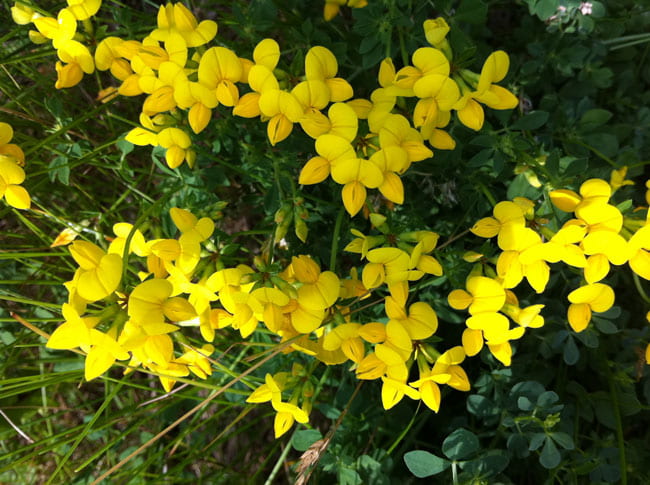
It seems there is an abundance of Lotus corniculatus (Birdsfoot trefoil) along the edges of the paths in the Cofrin Arboretum right now. The name originates from the seed pods that fan out from the stem like a bird foot. The three-lobed trefoil leaves are found in many species in the pea family (Fabaceae). Unfortunately, like so many other wildflowers it is exotic and can become invasive. This perennial plant is native to parts of Europe, Asia, and North Africa, and was probably introduced from Europe as a forage plant for cattle. It is common throughout the western Great Lakes states where the bright yellow flowers are found in pastures, roadsides, and disturbed riparian areas throughout the summer months.
Birdsfoot trefoil is able to thrive in low nutrient soils because, like other plants in the pea family, its roots contain nodules filled with symbiotic bacteria that can fix nitrogen. The bacteria are able to convert nitrogen in the atmosphere into a chemical form that is easily absorbed by plants. This allows it to easily invade sunny disturbed sites where it will eventually form a deep perennial root mass.
It can form dense low growing mats that shade out native plants and is considered invasive in Wisconsin, Minnesota, Illinois, and 5 other states. Because fire increases seed germination it can be a serious threat to our native prairies. Small plants can be dug up, but all of the roots must be removed to prevent it from resprouting. Heavy infestations are usually treated by repeated mowing or with herbicides.
More Information:
- US Forest Service description: http://na.fs.fed.us/fhp/invasive_plants/weeds/birds-foot-trefoil.pdf
- MN DNR description http://www.dnr.state.mn.us/invasives/terrestrialplants/herbaceous/birdsfoottrefoil.html
